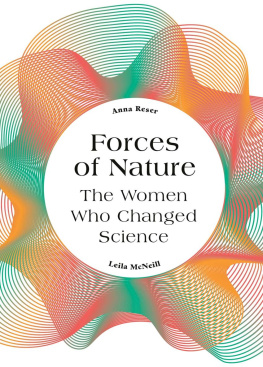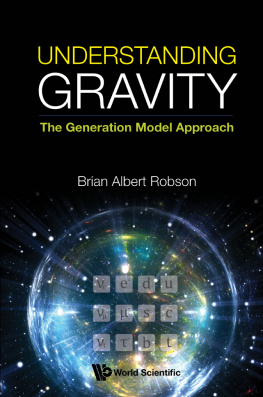Contents
Contents
Order from Force
A natural history of the vacuum
Jeffrey H Williams
Morgan & Claypool Publishers
Copyright 2015 Morgan & Claypool Publishers
All rights reserved. No part of this publication may be reproduced, stored in a retrieval system or transmitted in any form or by any means, electronic, mechanical, photocopying, recording or otherwise, without the prior permission of the publisher, or as expressly permitted by law or under terms agreed with the appropriate rights organization. Multiple copying is permitted in accordance with the terms of licences issued by the Copyright Licensing Agency, the Copyright Clearance Centre and other reproduction rights organisations.
Rights & Permissions
To obtain permission to re-use copyrighted material from Morgan & Claypool Publishers, please contact .
ISBN 978-1-6817-4241-0 (ebook)
ISBN 978-1-6817-4177-2 (print)
ISBN 978-1-6817-4113-0 (mobi)
DOI 10.1088/978-1-6817-4241-0
Version: 20151101
IOP Concise Physics
ISSN 2053-2571 (online)
ISSN 2054-7307 (print)
A Morgan & Claypool publication as part of IOP Concise Physics
Published by Morgan & Claypool Publishers, 40 Oak Drive, San Rafael, CA, 94903, USA
IOP Publishing, Temple Circus, Temple Way, Bristol BS1 6HG, UK
For BTC, for all his encouragement and support.
Preface
This book concerns the forces of nature and what investigations of these forces can tell us about the world we see about us. The story of these forces is long and complex, and contains many episodes that are not atypical of the bulk of scientific research, which could have achieved greater acclaim if only.
My intention is to introduce ideas of how the visible world, and those parts of it that we cannot observe either because they are too small or too large for our scale of perception, can be understood by consideration of only a few fundamental forces. My subject will be authority. In particular, what is the absolute authority that binds all humanity and which will brook of no disagreement or amendment. We will see that this authority is the corpus of, commonly termed, laws of physics arising from the forces of nature, and the corresponding constants of nature (for example, the speed of light, c, the charge of the electron, e, or the mass of the electron, me).
Some may choose to ignore man-made laws and attempt to avoid the consequences, but no one can ignore nor circumvent the fact that to every action there is an equal and opposite reaction; Sir Isaac Newtons third law of motion Actioni contrariam semper et qualem esse reactionem. Nor is it possible to avoid the inevitability of the force of attraction that exists between neutral atoms, which is responsible for condensation, i.e. the attractive force between atoms and molecules described by Dutch physicist Johannes Diderik van des Waals in his doctoral thesis of 1873 Over de Continuiteit van den Gas-en Vloeistoftoestand.
These laws of nature are valid and inescapable everywhere on Earth, just as they would be if we could measure them on the surface of a planet orbiting a distant star. These laws and their associated numerical constants convey a total authority. Whether we know it or not, and irrespective of whether we like it or not, these laws govern every aspect of our lives. In addition, these laws are capable of creating complexity and order; they generate ordered structures through application of a force, and we will in this volume explore this ability. We will see how the electromagnetic force leads to the condensation of gases to form solids and liquids. How a gas which is devoid of any order or structure, being merely an ensemble of particles in thermally driven chaos, endless energy without design, can condense to form a liquid that has some localized internal order, or to form a solid that has extended internal order. In the same way, the force of gravity takes random pieces of debris in space and is able to fashion planets and stars arranged in solar systems and galaxies.
The laws of physics govern our lives, and the constants of nature define our very morphology. The separation and orientation of the molecules which compose our bodies are determined by subtle intermolecular electromagnetic forces, whose magnitude is determined by the various constants of nature and whose operation is dictated by the laws of physics. We are merely living representations of these immutable physical laws.
Author biography
Jeffrey H Williams

Jeffrey Huw Williams was born in Swansea, Wales, on 13 April 1956, he gained his PhD in chemical physics from Cambridge University in 1981. His career has been in the physical sciences. First, as a research scientist in the universities of Cambridge, Oxford, Harvard and Illinois, and subsequently as a physicist at the Institute Laue-Langevin, Grenoble, one of the worlds leading centres for research involving neutrons and neutron scattering. He has published more than sixty technical papers and invited review articles in the peer-reviewed literature. However, he left research in 1992 and moved to the world of science publishing and the communication of science by becoming the European editor for the physical sciences for the AAASs Science. Subsequently, he was the Assistant Executive Secretary of the International Union of Pure and Applied Chemistry, the agency responsible for the advancement of chemistry through international collaboration. Most recently, 20032008, he was the head of publications at the Bureau international des poids et mesures (BIPM), Svres. The BIPM is charged by the Metre Convention of 1875 with ensuring world-wide uniformity of measurements and their traceability to the International System of Units (SI). It was during these years at the BIPM that he became interested in, and familiar with the origin of the Metric System, its subsequent evolution into the SI, and the coming transformation into the Quantum-SI.
Since retiring, he has devoted himself to writing; in 2014 he published Defining and Measuring Nature: The make of all things in the IOP Concise Physics series. This publication outlined the coming changes to the definitions of several of the base units of the SI, and the evolution of the SI into the Quantum-SI.
IOP Concise Physics
Order from Force
A natural history of the vacuum
Jeffrey H Williams
Chapter 1
Science, science fiction and science fantasy
1.1 Setting the scene
History tells us that before there was science and its most useful offshoot, technology, there was magic. In the evolution of a culture, the scientific worldview is always one of the later developments, and it evolves along with magic. After all, both magic and science ask the same questions: why and how is the natural world the way we observe it to be, and how may it be tamed and controlled?
In this evolution of our culture, the 17th century supposedly marked the period when astrology, the burning of witches and folk magic yielded to Sir Isaac Newtons (16421726) rationalism, and the laws of nature were established as experience explained by reason. Yet before there was reproducible and reliable science, there was unreliable or chancy science, which is little different from magic. Even in the Renaissance, scientific work (what would then have been termed the exploration of natural philosophy) was very much a hit and miss affair as few












